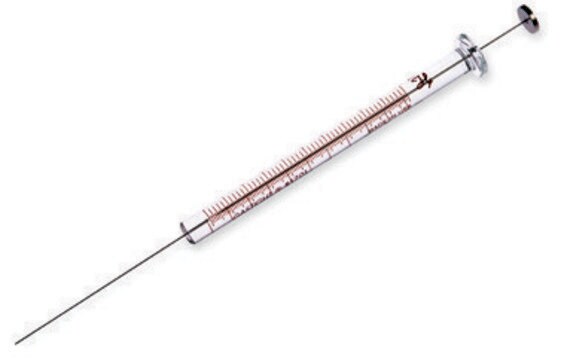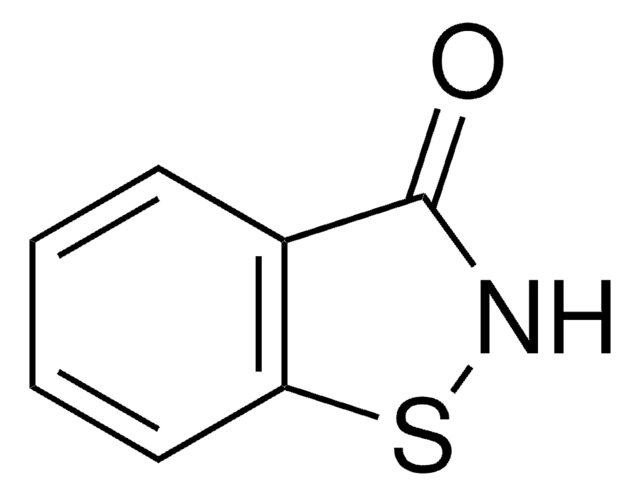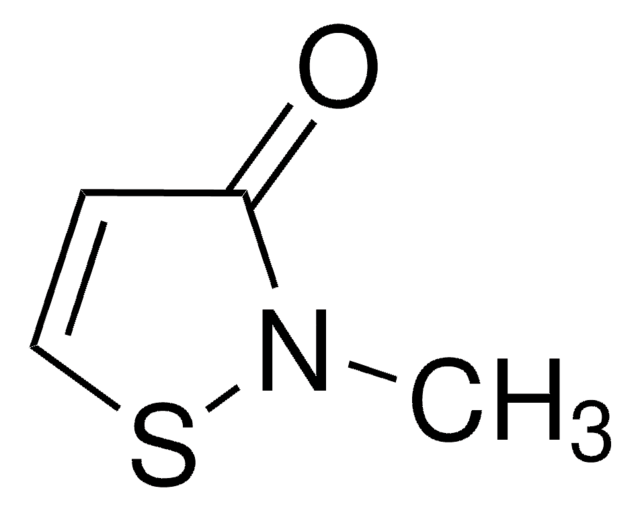34392
Methyldibromoglutaronitrile
analytical standard
Sinônimo(s):
1,2-Dibromo-2,4-dicyanobutane, 1-Bromo-1-(bromomethyl)-1,3-propanedicarbonitrile, 2-Bromo-2-(bromomethyl)glutaronitrile
About This Item
Produtos recomendados
grau
analytical standard
Nível de qualidade
prazo de validade
limited shelf life, expiry date on the label
técnica(s)
HPLC: suitable
gas chromatography (GC): suitable
pf
51-55 °C
aplicação(ões)
environmental
formato
neat
temperatura de armazenamento
2-8°C
cadeia de caracteres SMILES
BrCC(Br)(CCC#N)C#N
InChI
1S/C6H6Br2N2/c7-4-6(8,5-10)2-1-3-9/h1-2,4H2
chave InChI
DHVLDKHFGIVEIP-UHFFFAOYSA-N
Descrição geral
Aplicação
Produtos recomendados
Palavra indicadora
Danger
Frases de perigo
Declarações de precaução
Classificações de perigo
Acute Tox. 4 Oral - Skin Corr. 1B
Código de classe de armazenamento
8A - Combustible corrosive hazardous materials
Classe de risco de água (WGK)
WGK 2
Ponto de fulgor (°F)
Not applicable
Ponto de fulgor (°C)
Not applicable
Equipamento de proteção individual
Eyeshields, Faceshields, Gloves, type P3 (EN 143) respirator cartridges
Escolha uma das versões mais recentes:
Já possui este produto?
Encontre a documentação dos produtos que você adquiriu recentemente na biblioteca de documentos.
Nossa equipe de cientistas tem experiência em todas as áreas de pesquisa, incluindo Life Sciences, ciência de materiais, síntese química, cromatografia, química analítica e muitas outras.
Entre em contato com a assistência técnica


![Benzo[a]pyrene-d12 98 atom % D](/deepweb/assets/sigmaaldrich/product/structures/962/892/b867e1bb-083c-4337-b499-36eae87f40ad/640/b867e1bb-083c-4337-b499-36eae87f40ad.png)





![Benzo[a]pyrene ≥96% (HPLC)](/deepweb/assets/sigmaaldrich/product/structures/253/820/be96d879-1811-46c0-8f11-612019691c2d/640/be96d879-1811-46c0-8f11-612019691c2d.png)

